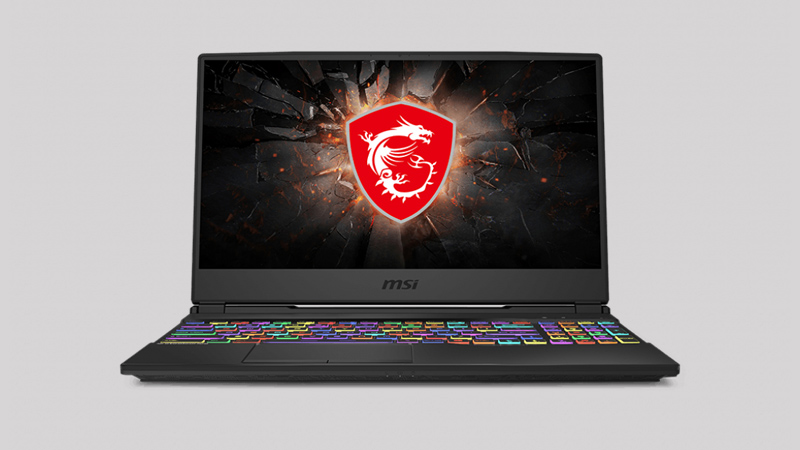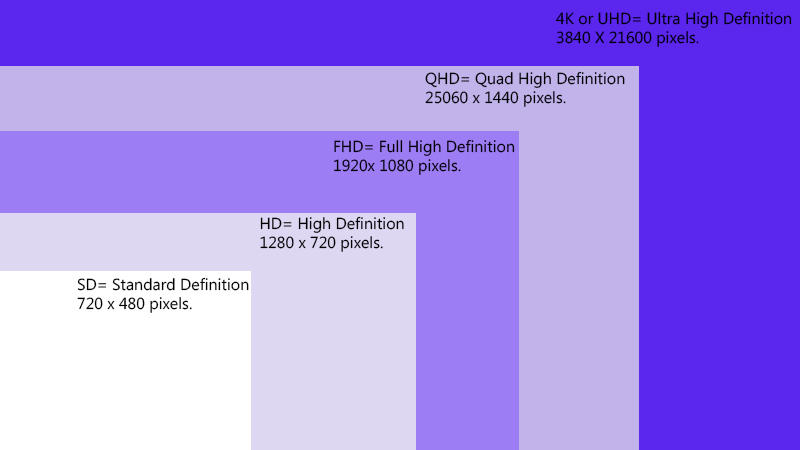What are FHD and UHD screen resolutions? We will walk you through their key features in this blog post.

Most laptop models cannot be upgraded or significantly modified, if at all nowadays. For that reason, make sure to research all available configurations before you settle on the right one for you. The display panel type and resolution are no exception. Whether you use your laptop for gaming, work, or web surfing, the screen can affect your computing experience.
There are many types of screen resolutions out there, like FHD, QHD, UHD, to name a few. So naturally, the process of picking the right one for you can get quite confusing. Below, we will compare the two of the most common options: FHD and UHD. We will also explore the advantages and disadvantages of both and offer a few recommendations to help you make an educated choice.
And if you are a gamer, we suggest checking the QHD vs. FHD for gaming laptops post as well.
FHD vs UHD: What Is the Difference?
Before we dive in, let’s figure out what a “screen resolution” is and why it matters. The display resolution indicates the maximum number of pixels a panel can show horizontally and vertically. You may have come across all kinds of acronyms for screen resolution, and it is not always clear which one is which. So let’s go through the most popular ones:
- SD: 720 x 480 pixels
- HD: 1280 x 720 pixels
- FHD: 1920 x 1080 pixels
- QHD: 2560 x 1440 pixels
- WQHD: 3440 x 1440 pixels
- UHD: 3840 x 2160 pixeles.

Full High Definition
FHD stands for “Full High Definition” and refers to 1080p video quality. It has 1920 pixel columns and 1080 pixel rows. This type of screen resolution is more or less a golden standard for most laptop models available on the market today. Why? Because it offers sufficient image quality but also won’t drain your battery. Of course, there are other factors to consider when choosing between FHD and UHD display options, but for day-to-day tasks, a laptop with a 1080p screen is all you need.
Ultra High Definition
The UHD screen resolution has a pixel array of 3840 x 2160, equating to 8,294,400 pixels or about eight megapixels. That is almost four times greater than the FHD. UHD means “Ultra High Definition,” and most people in the tech world commonly refer to it as 4K.
Nowadays, many laptop models, monitors, and TVs can come with this type of resolution. UHD screen panels offer a more vivid image quality compared to an FHD. For example, most content creators and photographers prefer to work in 4K because of the better color accuracy and a sharper image.
Full HD vs Ultra HD: Advantages
Pros of FHD
On the one hand, a full-high-definition is still a high-quality viewing experience that many users find more than acceptable. Moreover, this type of screen resolution is very affordable. Thus, you could find tons of budget laptops with FHD screens.
Furthermore, those who are often on the move opt for an FHD model because it doesn’t drain the battery.
Pros of UHD
On the other hand, an ultra-high-definition screen offers a superior image quality. Creative professionals like web developers or graphic designers often cannot work in FHD because of the lower resolution. For them, UHD is a far more sensible option.
FHD vs UHD: Power Consumption
1080p displays have a fewer number of pixels compared to the 4K. A lower pixel count means the display panel needs less power. And because of that, a UHD screen will drain your laptop battery faster.
FHD vs UHD: Which One Is Better for Gaming?
You would think that a higher resolution works better for gaming? But that is not necessarily the case. Sure, the 4K is a clear winner of this FHD vs UHD battle in terms of image quality. But for optimal gaming performance, the 1080p display would be a better choice due to the higher screen refresh rate. It allows playing AAA titles like Dota smoothly, without any noticeable screen tearing. Not to mention the FHD option is usually cheaper.
Overall, the 1080p is a better-balanced display for everyday tasks and gaming. And without breaking the bank. But for tasks like video editing, streaming, graphic design, we suggest going for the UHD panel.
Bottom Line
UHD means higher screen resolution. No wonder many media gadgets now come with 4K displays. UHD is an excellent choice for creative professionals. But if you are an avid gamer, it makes sense to sacrifice the pixel count and go for an FHD screen instead. Finally, if you have an unwanted laptop sitting around, we at Gadget Salvation might just buy it from you! We guarantee a hassle-free and quick laptop trade-in experience. Just visit our home page to get started.










